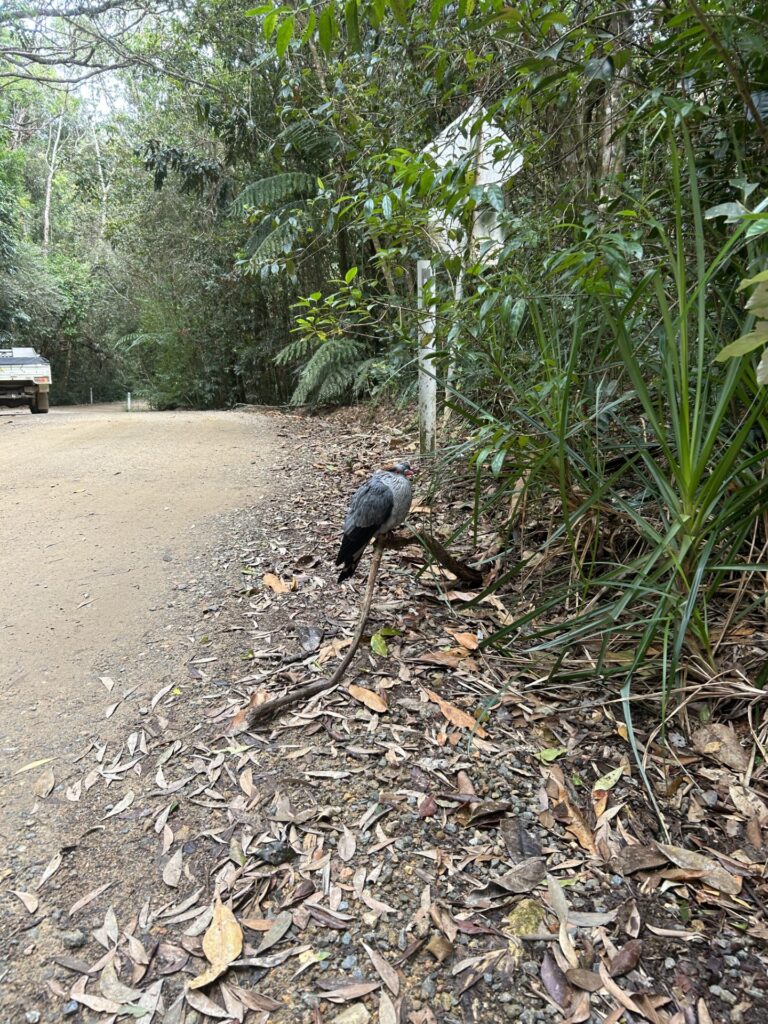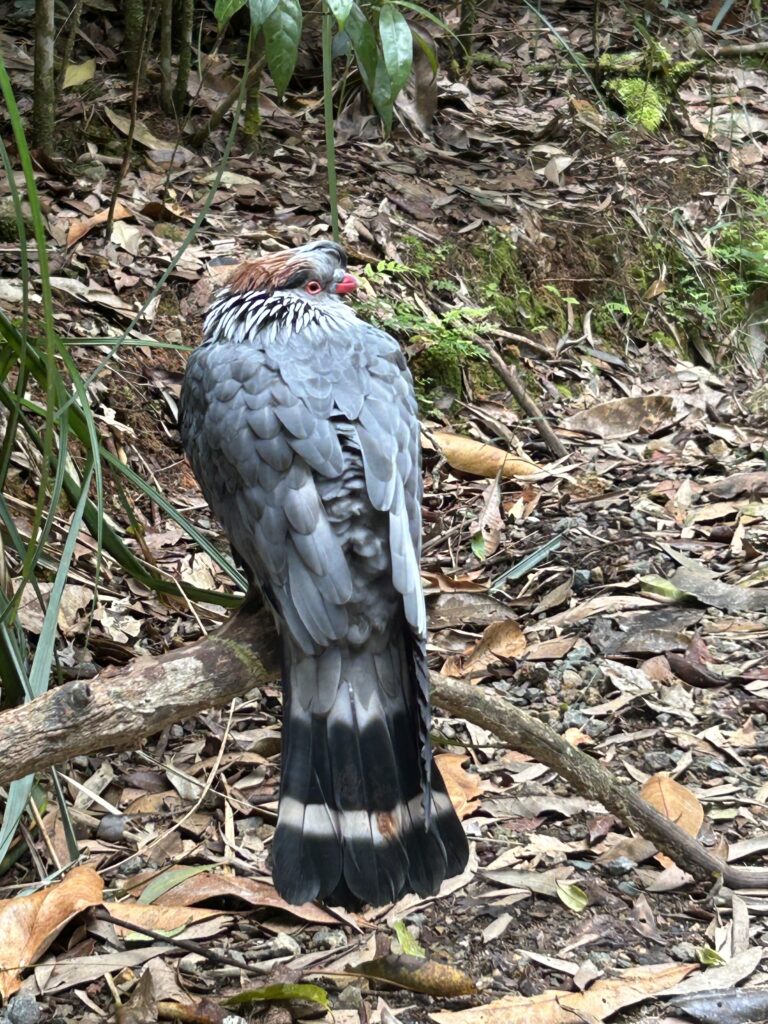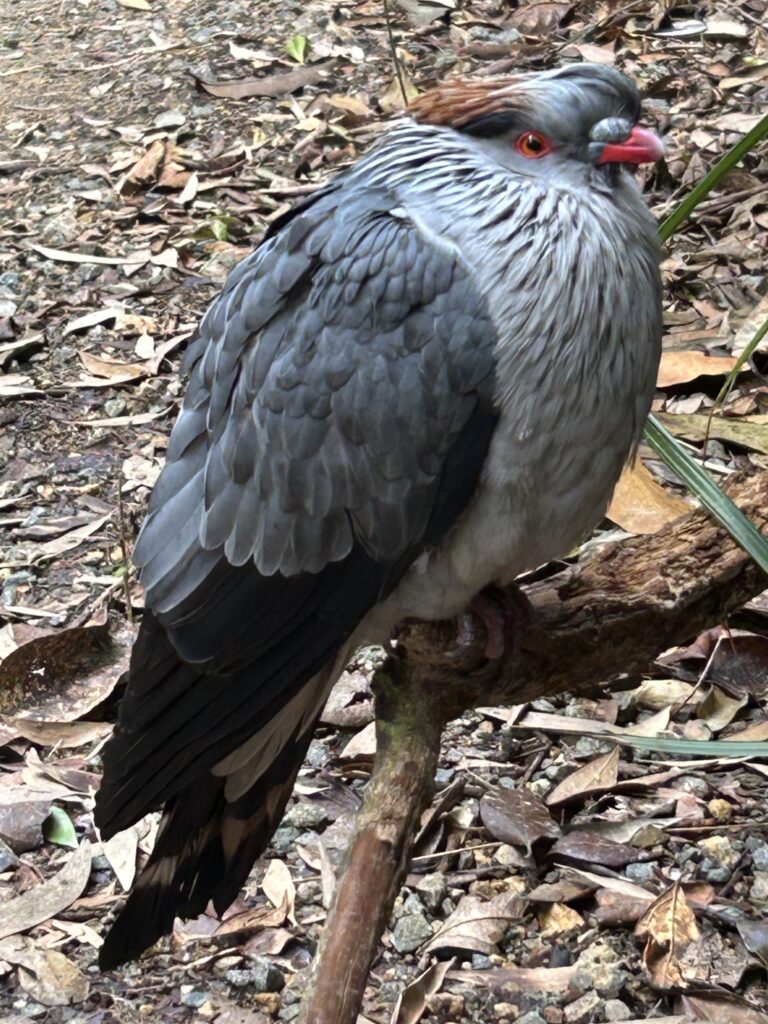Topknot Pigeons are most often seen in flight, usually in flocks high over the forest, says the Birds of Australia guide by Campbell et al.
And that’s how we mostly see them during their nomadic and sporadic visits to Paluma when then the time is right to find their favourite food plants fruiting. So it was a big surprise for Tracy Cooper on her way to work at the dam last week when she came across this big pigeon perched on a fallen branch beside Mt Spec Road.

She stopped and walked back, hoping to get a picture but expecting the bird to fly off. It showed no disturbed reaction to her approach to about a metre away and she was able to get these great pics. It showed no visible sign of injury or illness, other than being close to the ground and being undisturbed by people approaching.


Tracy’s colleague saw it separately on the way to work and it was still there on the same branch in the afternoon when he dropped some fruit of Ficus destruens beside the perch. The next morning it was gone.
Topknots (Lopholaimus antarcticus) may be seen singly or in pairs or flocks high above the canopy when they aren’t feeding or nesting in the canopy.
The Atherton Tableland, Paluma and the Lamington Plateau are good places to see them say Campbell et al but single rare migrants have been seen even in Tasmania.
Topknot Pigeons have lost much of their rainforest habitat to clearing, but have compensated by feeding on the introduced tree species Camphor Laurel and they may spread this unwelcome weed into agricultural areas.
Although the Paluma bird looked perky enough, being out of the canopy and not being frightened away by people does suggest it wasn’t well.
Australia is worried about new variants of avian flu arriving here from wild birds coming in from overseas. Birds have been coping with, and developing some resistance to, bird flu for thousands of years but the virus may mutate from common strains in domestic or commercial flocks when passing back to wild bird populations. A new variant may be catastrophic for wild bird populations.
People are being asked to report sick birds. “The following are indications that a bird may be sick or injured: The bird is quiet, dull, the eyes may be closed, and it has fluffed feathers (the bird looks “puffed up”). It may have an obvious wound, breathing problems, a drooping wing, or show lameness or an inability to stand. It does not fly away when approached.”
Even though this bird looked pretty perky Tracy and colleague were wise not to handle it.
Photos by Tracy Cooper. Text by Peter Cooke
Some additional comments from Jamie:
The topknot pigeon is endemic to Australia and is fairly common in rainforests and wet sclerophyll forest along the entire eastern coastal ranges. In flight their size and distictive white tail band help in identification, while when perched the fluffy brown swept-back crown is diagnostic, bringing to mind aging rockstars or a past US president whose comb-over got blown back in the wind.

Very interesting . Hope it was a bit hung over and after the thoughtful snack it was revived and and took off to join its mates.